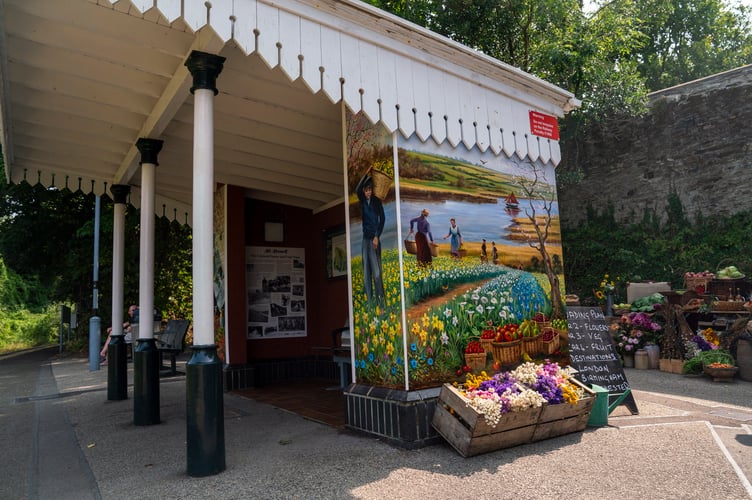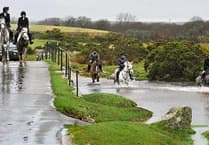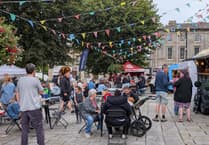A PROJECT celebrating the Tamar Valley’s once-thriving market gardening industry, and the crucial role the railways played in transporting its produce nationwide, has received a funding boost of more than £6,000 from Great Western Railway (GWR).
The 2024 fund has a particular focus on projects tied to Railway 200, marking two centuries since the first passenger trains ran in Britain.
As part of its National Rail Contract with the Department for Transport, GWR provides financial backing to schools, councils, community organisations and charities, helping to deliver projects that bring social, cultural and educational benefits.
For Calstock in Bloom, the grant has enabled a creative collaboration with Calstock Archives that shines a light on the valley’s agricultural past. Together, the groups commissioned a striking new mural, now on display at Calstock station shelter, which captures the story of the Tamar Valley’s “Fruit & Flower” industry.
At its peak in the 1950s, the valley’s fertile land supported around 1,000 workers, who cultivated daffodils, irises, strawberries, apples, pears and cherries. This produce was then transported by the so-called Fruit & Flower trains, which left the valley up to four times daily, carrying freshly harvested goods to markets across the country.

The new mural offers visitors a colourful and lasting reminder of that history while celebrating the beauty and productivity of the valley’s landscape.
Colin Bates, vice-chair of Calstock in Bloom, said the funding has allowed the community to honour its heritage in a meaningful and engaging way.
“We’re extremely grateful for this funding, which has helped to not only deliver an excellent public work of art, but has also facilitated the education of the local community in what was happening here only a generation previously,” he said.
“When the autumn term commences, we will be running dedicated art sessions with the local primary school. These will cover not only the creative aspect but also help them in understanding the history of their community. We’ve also been able to deliver an art workshop to local residents around the flowers that were grown in the valley.
“We hope this will be a legacy that continues to encourage visitors to the beauty of the Tamar Valley, which in turn will help our local businesses.”
The launch event also saw volunteers from Calstock in Bloom dress in period costume to highlight the history of the industry, with the station decorated in displays of fruit and flowers once exported on the trains.
Emma Morris, GWR’s Senior Community Impact Manager, praised the project for safeguarding a vital piece of local history, saying: “This year we celebrate 200 years of the railway – and the Tamar Valley’s Fruit & Flower trains formed a fascinating part of both the railway network and the community’s identity. Thanks to the dedication of Calstock in Bloom and Calstock Archives, this story will not be lost, but remembered for generations to come.”
.jpg?width=752&height=500&crop=752:500)





Comments
This article has no comments yet. Be the first to leave a comment.